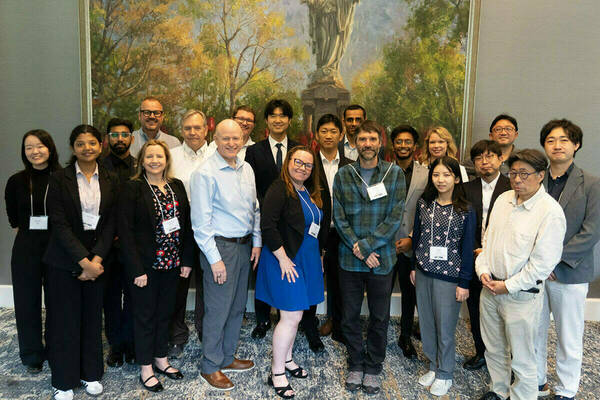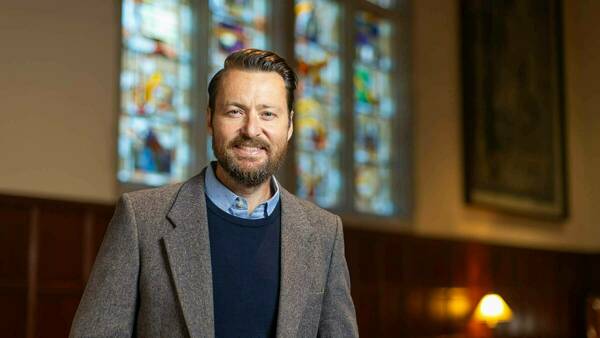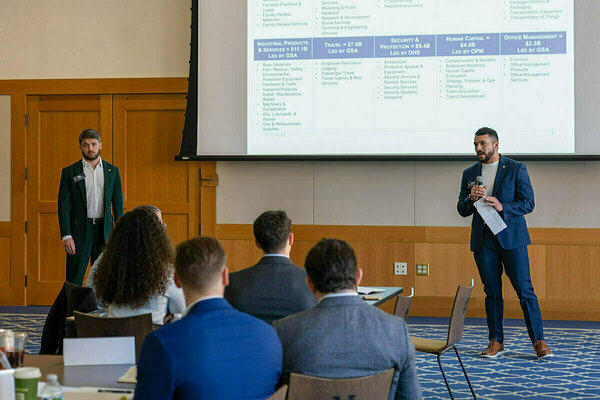As humans change the globe, they also influence the transmission of diseases, an extensive study in Nature shows
Human activity across the globe contributes to the rise in emerging infectious disease, but researchers had not concluded which of these activities, called global change drivers, increases risk the most.

A sweeping study in Nature by University of Notre Dame biologist Jason Rohr demonstrates that biodiversity loss — the decrease in the variety of living organisms — may be a main driver of infectious diseases across the world, followed by introduced (non-native) species, climate change, and chemical pollution.
“This study is particularly important because we knew that infectious diseases were on the rise and that humans were profoundly modifying the environment, but we did not know which global change drivers most increased or decreased infections and under what contexts, and thus disease control efforts were partially flying blind,” said Rohr, the Ludmilla F., Stephen J., and Robert T. Galla College Professor & Department Chair in the Department of Biological Sciences. “This study now provides greater guidance on the conditions that are associated with both increases and decreases in infectious diseases of plants, animals, and humans.”
Rohr and collaborators made the determinations after amassing and analyzing a dataset of 3,000 observations gleaned from scientific literature written in eight different languages. The results were consistent among human and non-human diseases. While four change drivers increased the risk for infectious diseases, habitat loss — particularly urbanization — reduced disease.
For their meta-analysis, the team searched for terms like “disease,” “parasite,” and “pathogen” and combined those with five global change drivers: climate change, biodiversity loss, invasive species or introduced invasive species, habitat loss and change, and chemical pollution.
The extensive analysis — which started before the COVID-19 pandemic — also compared human and non-human diseases. All organisms showed similar patterns with regard to the global change drivers.
"The fact that many global change drivers increase parasites of humans in non-human animals and increase all parasites in wild animals suggests that environmental change might increase the occurrence of parasite spillover from animals to humans and, therefore, also pandemic risk," said Rohr, who is affiliated with the Eck Institute of Global Health.
Rohr and collaborators reviewed almost 1,500 host-parasite combinations, and considered everything from viruses to fungi to parasites and hosts like humans, birds, mollusks and mammals. They also broke the global change drivers into sub-categories. Climate change included categories like extreme temperatures, mean temperatures, and precipitation, and for habitat loss included subcategories like forest fragmentation, urbanization, and others.
"The lack of context dependencies for climate change suggests that disease increases in response to climate change will be consistent and widespread, further stressing the need for reductions in greenhouse gas emissions to mitigate these detrimental impacts of climate change,” Rohr said.
While analyzing the papers, the research team noticed that there were few studies on interventions to remediate the effects of global change on disease. “There is considerable evidence that simply reversing the magnitude of global change drivers can be insufficient to fully counteract their effects,” Rohr said.
Therefore, researchers need more tests of interventions to remediate the highest priority drivers described in the study, Rohr said. They also need to evaluate whether ecosystem restoration can be used as a lever to manage disease. Most studies in the meta-analysis consider only the effects of a single stressor or global change driver on disease, despite most organisms experiencing several factors simultaneously.
Because there are limited resources to manage infectious diseases, researchers need to target resources at the global change drivers that are most likely to increase disease, Rohr said.
“Our study suggests that reducing greenhouse gas emissions, managing ecosystem health, and preventing biological invasions and biodiversity loss could help reduce the burden of plant, animal and human diseases, especially when coupled with improvements to social and economic determinants of health,” he said.
In addition to Rohr, the 19 other collaborators on the project included several researchers from his lab at the University of Notre Dame, as well as researchers from Yale University, New Haven, Connecticut; Emory University Atlanta, Georgia; Oregon State University, Corvallis, Oregon; and the University of Connecticut, Storrs, Connecticut.
Erin Mordecai, associate professor in the Stanford University Department of Biology, and senior fellow at the Stanford Woods Institute for Environment, said it’s helpful to have this type of meta-analysis to point to where the evidence is strongest for which global changes contribute to worse infectious disease outcomes.
“I hope this evidence can be used in international policy, such as in the United Nations Intergovernmental Panel on Climate Change and Intergovernmental Science-Policy Platform on Biodiversity and Ecosystem Services reports, to spur action on climate change and biodiversity loss due to their negative impacts on disease,” she said.
This study was funded by the U.S. National Science Foundation.
Originally published by at science.nd.edu on May 08, 2024.
Latest Research
- Fighting for maternal healthThe United States has the highest maternal mortality rate of developed nations. An innovative postpartum care model from Notre Dame can save mothers around the globe. Read the story Originally…
- NSF Cyber SMART’s fall meeting shapes fifth year of project, legacy and future plans, and adds new memberThe U.S. National Science Foundation (NSF) Cyber SMART center gathered for its fall meeting on the University of Notre Dame campus this September. The meeting served as a checkpoint with progress reports and new projects from research leads and students…
- Slavic and Eurasian studies professor wins Humboldt fellowship to research how Russia’s religious past shapes its presentWhen Russia invaded Ukraine on Feb. 24, 2022, Sean Griffin realized his second book needed a new title. Griffin, an associate professor in the University of Notre Dame’s Department of…
- Notre Dame’s R.I.S.E. AI Conference builds interdisciplinary collaboration to inform human-centered artificial intelligenceAs artificial intelligence (AI) transforms nearly every sector of society — from healthcare and education to governance and global development — a critical question emerges: How can we conscientiously design and deploy these powerful technologies to positively impact society? This…
- University of Notre Dame joins the Global Coalition of Ukrainian StudiesThe University of Notre Dame has joined the Global Coalition of Ukrainian Studies after signing a Memorandum of Cooperation (MOC), formalized on September 24, 2025, at the Ukrainian Institute of America in New York City. Notre Dame joined four other American…
- The University of Notre Dame’s Mendoza College of Business and Industry Labs team up to inspire national security manufacturing competitiveness in the regionThe South Bend - Elkhart Region is full of manufacturing companies that are poised to grow, and Executive Master of Business Administration (EMBA) and Master of Business Administration (MBA) students at the University of Notre Dame are finding innovative ways to contribute to that growth. Earlier…













